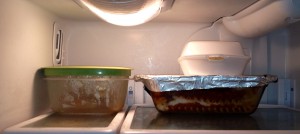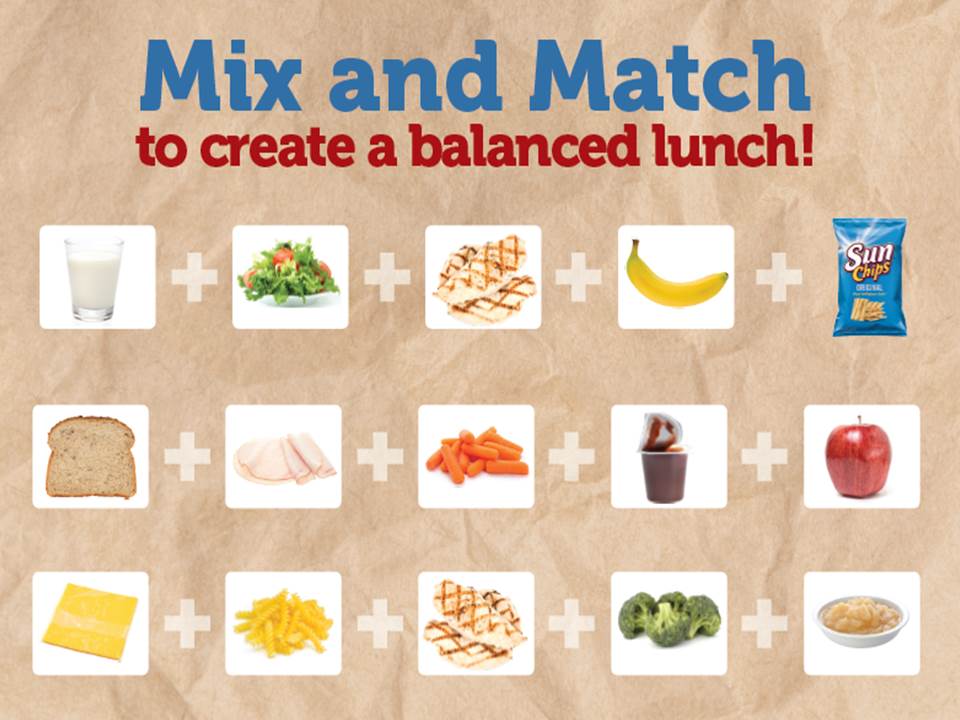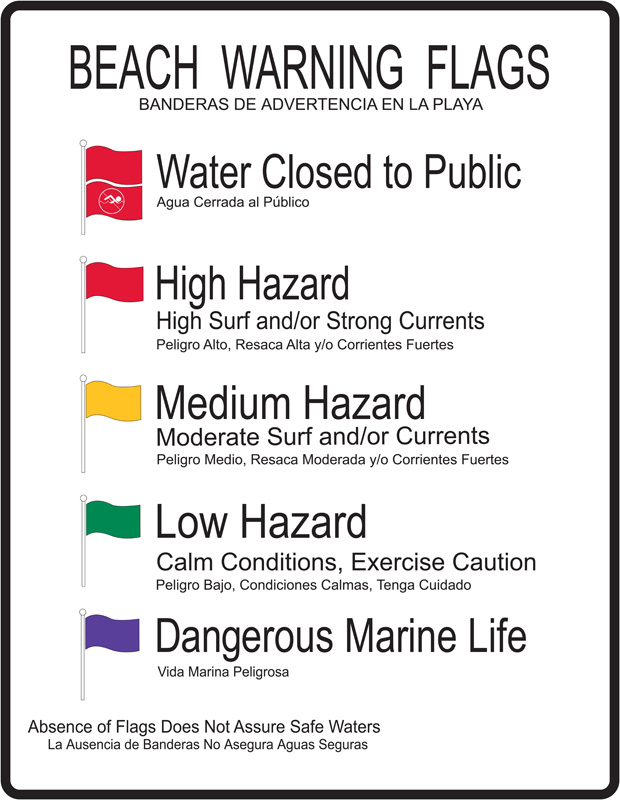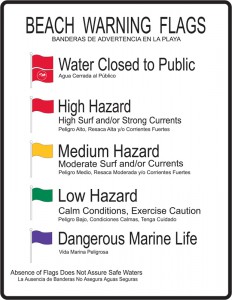
by Ricki McWilliams | Dec 11, 2014
Thank You for a Wonderful Year!
As we come to the end of our 100th year of serving the citizens of Florida, the University of Florida/IFAS Extension Faculty located in the 16 county offices of the Florida Panhandle thank you for making 2014 another great year!
Extension has come a long way assisting farmers and their families with relevant information since the beginning of the 20th century. Today, 100 years later, UF/IFAS Extension continues to provide science-based information to the citizens of Northwest Florida.
This year our County Extension Faculty provided valuable information and educational programs to 1000’s of individuals, families, businesses, and agricultural producers across the panhandle. As you know, our educational programming includes topics in areas such as Agriculture, Natural Resources, Horticulture, Family and Consumer Sciences, and 4-H Youth Development. UF/IFAS has a Solution for your Life!
We are excited about, and dedicated to providing our clients the most recent and science-based information on a wide range of topics such as:
- agricultural production and marketing,
- providing youth with exciting opportunities that develop life skills, teamwork, and responsibility
- food preservation, cooking
- helping individuals and families with health and wellness, parenting and manage budgets,
- consumer assistance within the home,
- wildlife and land management,
- coastal and inland fishery management,
- home gardening and commercial landscaping,
- acquiring Continuing Education Units for a variety of licenses.
Though the first 100 years of UF/IFAS Extension have been very productive we do not plan on sitting back and resting on the accomplishments of the past. We will continue to provide you and your family the best information and education available to provide “Solutions for Your Life!”
Thank you once again for participating in our Extension programs! We look forward to seeing you in 2015, and as always, if you have a question on any topic, or a suggestion to help us help you better, please do not hesitate to contact us. You can find your local County Extension office on the web at http://nwdistrict.ifas.ufl.edu or Facebook at https://www.facebook.com/IFASNW.
Happy Holidays & Best Wishes for the New Year!
From,
Dr. Pete Vergot III, Professor, and Northwest District Extension Director and your County Extension Faculty and Staff of the UF/IFAS Extension Northwest District serving Panhandle Florida

by Ricki McWilliams | Nov 13, 2014
 There is a time limit on leftovers.
There is a time limit on leftovers.
While leftovers can be a lifesaver for figuring out lunch the next day or dinner when you’re in a time crunch, it is important to remember safe food handling practices including eating, freezing or tossing out refrigerated leftovers within 3-4 days.
Limits to leftovers
Put leftovers in the refrigerator as soon as possible; make sure your refrigerator temperature is 40o F or colder. When possible, label your leftovers with a date and eat within 4 days. If you want to enjoy your leftovers longer than 4 days, transfer them to the freezer. TIP: When placing hot foods directly in the refrigerator, separate the food into small, shallow containers. This allows the food to cool more quickly.
Storage for Leftover Foods – Best Quality
| Product |
Refrigerator (40o F) |
Freezer (0o F) |
| Eggs: |
| Casserole, quiche, omelet |
3-4 days |
2 months |
| Hard-cooked |
1 weeks |
Do not freeze |
| Soups & Stews: |
| Vegetables |
3-4 days |
2-3 months |
| Meat added |
1-2 days |
2-3 months |
| Meat Leftovers: |
| Cooked meat & meat dishes |
3-4 days |
2-3 months |
| Gravy & meat broth |
1-2 days |
2-3 months |
| Cooked Poultry |
| Fried Chicken, plain pieces, cooked poultry dishes |
3-4 days |
4 months |
| Pieces, with broth/gravy |
1-2 days |
6 months |
| Chicken nuggets, patties |
1-2 days |
1-3 months |
| Cooked Seafood: |
| Fish |
3-4 days |
3 months |
| Crab |
1-2 days |
3 months |
| Shrimp |
3-4 days |
2 months |
Fight Bacteria
Follow these four safe food handling practices to keep your foods safe from bacteria:
- Clean: Wash surfaces and hands before and after handling food products.
- Separate: Keep foods separate and don’t cross-contaminate.
- Cook: Cook and reheat food to at least 165o F (gravy, soups, and sauces should be reheated to a boil). Measure temperatures with a food thermometer.
- Chill: Bacteria grow quickly between 41o F and 140o F. Keep your food out of the danger zone by refrigerating it promptly.
For additional food safety information, contact your local UF/IFAS Extension Faculty member in your area.
Sources:
Partnership for Food Safety Education. www.fightbac.org
USDA Food Safety and Inspection Service. August 2013. Basics for Handling Food Safely. http://www.fsis.usda.gov/wps/portal/fsis/topics/food-safety-education/get-answers/food-safety-fact-sheets/safe-food-handling/basics-for-handling-food-safely/

by Ricki McWilliams | Sep 6, 2014
 It’s time to start getting backpacks ready, lunches packed and kids off to school. Back to school time is the perfect time to start packing a healthier lunchbox. Packing your child’s lunch may contribute to the difficulties of getting out the door in the morning but it does not have to. You know your child better than anyone, their likes and dislikes, so go with what you know.
It’s time to start getting backpacks ready, lunches packed and kids off to school. Back to school time is the perfect time to start packing a healthier lunchbox. Packing your child’s lunch may contribute to the difficulties of getting out the door in the morning but it does not have to. You know your child better than anyone, their likes and dislikes, so go with what you know.
The first step to packing a lunch is to determine how much food is enough for your child. You will know you did not pack enough when they come home and tell you they ate all their food and are still hungry. Likewise, if you pack too much, you will know by seeing uneaten or half-eaten items in their lunch box at the end of the day. Start by packing between 3 and 6 items. They will have enough variety in their lunch box to sustain them throughout the school day without too much waste. MyPlate.gov is a great resource for building a balanced meal (protein, vegetable, fruit, grain, dairy).
Secondly, pack as much as you can the night before. This will decrease morning stress. Cut up fruits and vegetables and store in an airtight container in the refrigerator. Cut up fresh ingredients for sandwiches, if required. Make up cracker or dried fruit packs. Wrap up home-baked treats and place in the lunch box.
Lastly, keep in mind this food safety tip: Include gel ice packs to keep refrigerated food cold. Refrigerated food shouldn’t be above 40 degrees for more than 4 hours due to increased bacterial growth causing possible illness.
Lunchbox Meal Ideas:
1.) Wheat crackers, cheese cubes, deli meat, strawberries/blueberries, snap peas (with their favorite dipping sauce*)
2.) Mini quiche, carrots, celery with peanut butter and raisins, whole fruit (pear, orange, banana)
*Want something to dip kid-friendly veggies in besides ranch? Try low-fat Greek yogurt, hummus, or this cottage cheese veggie dip:
1/2 cup low-fat cottage cheese
1/4 teaspoon lemon pepper
Enjoy with baby carrots, snow/snap peas, bell pepper strips
Snack Ideas:
1.) Whole wheat pita cut into wedges with 2 tablespoons hummus for dip
2.) Trail mix: mix 20 almonds, miniature box of raisins, and ¼ cup sunflower seeds
For additional information on creating nutritious meals, contact your local Extension office.

by Ricki McWilliams | Jun 27, 2014
Have a Wonderful Summer in the Water
With the recent official start of Summer water related activities are in full swing. When you and your loved ones are around the water it is important to know the basic safety and survival skills.
Water-safety survival skills:
- floating or treading water for one minute without a flotation device
- stepping or jumping into water over your head and returning to the surface
- treading water or floating in a full circle and then finding a way out of the water
- exiting a pool without using a ladder
- swimming 25 yards (the length of a standard pool) without stopping
Only 56% of adults who say they can swim can perform the 5 critical water-safety skills that could save their lives. (American Red Cross)
It is important to know how to swim and make smart choices around the water:
- always swim in designated areas supervised by lifeguards
- always swim with a buddy
Our emerald waters and white sandy beaches make visiting the Gulf a fun, family weekend activity but it is important to look for the beach flag warning system and know what each flag means.
[important]
Flag Warning System:
- Double Red Flag: Water is closed to public (dangerous water conditions)
- Red Flag: High Hazard (high surf and/or strong currents)
- Yellow Flag: Medium Hazard (moderate surf and/or currents)
- Green Flag: Low Hazard (calm conditions, exercise caution)
- Purple Flag: Marine Pests Present (jellyfish, stingrays, dangerous fish)

[/important]
Thinking you can do more in the water than you are capable of can endanger you as well as others. A recent CDC report noted that about 21,000 children and young adults drowned from 1999 through 2010. For people aged 29 and younger, drowning is one of the top three causes of unintentional injury or death.
Contact your local UF/IFAS Extension agent, local community pool or the American Red Cross to find more information on swimming lessons, water-safety education programs, and training opportunities for lifeguards and water-safety instructors.
by Ricki McWilliams | Nov 16, 2013
 The Season of Hallothanksmas is upon us. Yes, I know what you’re thinking: treats, meats, and delicious eats. But let’s shift our way of thinking. What if we turn our focus to family, friends, and making great memories? Here are three things to think about this holiday season:
The Season of Hallothanksmas is upon us. Yes, I know what you’re thinking: treats, meats, and delicious eats. But let’s shift our way of thinking. What if we turn our focus to family, friends, and making great memories? Here are three things to think about this holiday season:
1. Portion control – Have you noticed how portion sizes keep getting bigger with the option to “super-size?” Some portion sizes have increased so much that they now equal the amount recommended for the entire day. With this growth have come increases in waistlines and body weight. Start with figuring out how big your portions really are. Pour/place in a dish the amount you would normally eat then use a measuring cup to find out how much you are actually eating. Take the Portion Distortion Quiz now.
Basic guidelines when measuring portions:
1 cup = baseball
½ cup = light bulb
1 oz or 2 tbsp = golf ball
1 tbsp = silver dollar
3 oz chicken or meat =deck of cards
3 oz fish = checkbook
2. Some easy ways to keep your commitment to healthful eating: Pack your shopping cart with plenty of fresh vegetables like sweet potatoes, winter squash, broccoli, carrots, and green beans. Apples, cranberries, and pears combine easily for a tasty salad, fruit crisp, or topping for the turkey. Reduce fat and calories without sacrificing the taste with these quick substitutions: two egg whites for one egg; low-sodium, fat-free broth in your mashed potatoes; cutting back on added butter or margarine; applesauce for oil, margarine, or butter when baking. Use fat-free yogurt, sour cream, and whipped topping for dips, sauces, and pie toppings. Try sliced almonds in place of fried onion rings for a crunchy topping. Replace regular with reduced-fat or low-fat cheese for salads and casseroles. Substituting ingredients can change the texture of the finished product so be sure to start with small changes.
3. Going to a gathering? With a little preparation, you can still keep off the extra holiday pounds. If you plan on treating yourself later, start your day with a small meal that includes whole grains, fruit, low-fat or fat-free dairy, and protein like eggs, ham, or peanut butter. Don’t starve yourself beforehand. Rather, eat a small, lower-calorie meal or snack so you don’t overdo it at the party. Choose carefully and decide among foods you definitely will eat, those you will sample, and those you will skip. Don’t rush to eat. Socialize and settle into the festivities before you eat. Move your socializing away from the buffet or appetizer trays so you don’t nibble unconsciously.
Sources: www.eatright.org; http://myplate.gov/







